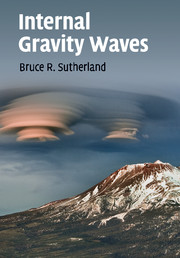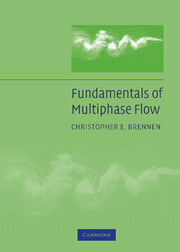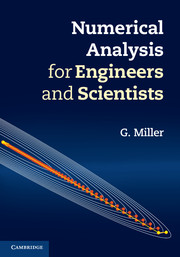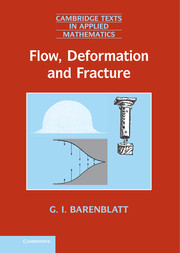3654 results in ebooks in fluid mechanics
3 - Making and displaying a scientific poster
-
- Book:
- Reporting Research
- Published online:
- 05 October 2014
- Print publication:
- 23 October 2014, pp 87-100
-
- Chapter
- Export citation
2 - Speaking about your work
-
- Book:
- Reporting Research
- Published online:
- 05 October 2014
- Print publication:
- 23 October 2014, pp 69-86
-
- Chapter
- Export citation

Internal Gravity Waves
-
- Published online:
- 05 October 2014
- Print publication:
- 02 September 2010

Reporting Research
- A Biologist's Guide to Articles, Talks, and Posters
-
- Published online:
- 05 October 2014
- Print publication:
- 23 October 2014

Fundamentals of Multiphase Flow
-
- Published online:
- 05 June 2014
- Print publication:
- 18 April 2005
Introduction
-
- Book:
- Flow, Deformation and Fracture
- Published online:
- 05 June 2014
- Print publication:
- 05 June 2014, pp 1-9
-
- Chapter
-
- You have access
- Export citation
Preface
-
- Book:
- Flow, Deformation and Fracture
- Published online:
- 05 June 2014
- Print publication:
- 05 June 2014, pp xiii-xx
-
- Chapter
- Export citation
Index
-
- Book:
- Flow, Deformation and Fracture
- Published online:
- 05 June 2014
- Print publication:
- 05 June 2014, pp 253-255
-
- Chapter
- Export citation
References
-
- Book:
- Flow, Deformation and Fracture
- Published online:
- 05 June 2014
- Print publication:
- 05 June 2014, pp 243-252
-
- Chapter
- Export citation
Dedication
-
- Book:
- Flow, Deformation and Fracture
- Published online:
- 05 June 2014
- Print publication:
- 05 June 2014, pp v-vi
-
- Chapter
- Export citation
Contents
-
- Book:
- Flow, Deformation and Fracture
- Published online:
- 05 June 2014
- Print publication:
- 05 June 2014, pp vii-x
-
- Chapter
- Export citation
Frontmatter
-
- Book:
- Flow, Deformation and Fracture
- Published online:
- 05 June 2014
- Print publication:
- 05 June 2014, pp i-iv
-
- Chapter
- Export citation
3 - The ideal incompressible fluid approximation: general concepts and relations
-
- Book:
- Flow, Deformation and Fracture
- Published online:
- 05 June 2014
- Print publication:
- 05 June 2014, pp 48-62
-
- Chapter
- Export citation
6 - The linear elastic solid approximation. Applications: brittle and quasi-brittle fracture; strength of structures
-
- Book:
- Flow, Deformation and Fracture
- Published online:
- 05 June 2014
- Print publication:
- 05 June 2014, pp 101-123
-
- Chapter
- Export citation

Numerical Analysis for Engineers and Scientists
-
- Published online:
- 05 June 2014
- Print publication:
- 29 May 2014

Flow, Deformation and Fracture
- Lectures on Fluid Mechanics and the Mechanics of Deformable Solids for Mathematicians and Physicists
-
- Published online:
- 05 June 2014
- Print publication:
- 05 June 2014
2 - Dimensional analysis and physical similitude
-
- Book:
- Flow, Deformation and Fracture
- Published online:
- 05 June 2014
- Print publication:
- 05 June 2014, pp 29-47
-
- Chapter
- Export citation
10 - The ideal gas approximation. Sound waves; shock waves
-
- Book:
- Flow, Deformation and Fracture
- Published online:
- 05 June 2014
- Print publication:
- 05 June 2014, pp 164-181
-
- Chapter
- Export citation
1 - Idealized continuous media: the basic concepts
-
- Book:
- Flow, Deformation and Fracture
- Published online:
- 05 June 2014
- Print publication:
- 05 June 2014, pp 10-28
-
- Chapter
- Export citation
4 - The ideal incompressible fluid approximation: analysis and applications
-
- Book:
- Flow, Deformation and Fracture
- Published online:
- 05 June 2014
- Print publication:
- 05 June 2014, pp 63-78
-
- Chapter
- Export citation
